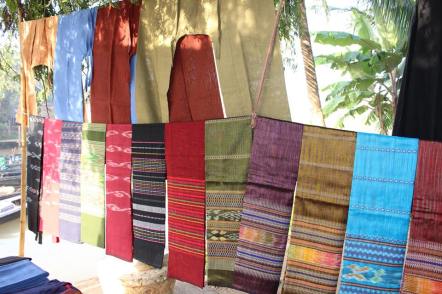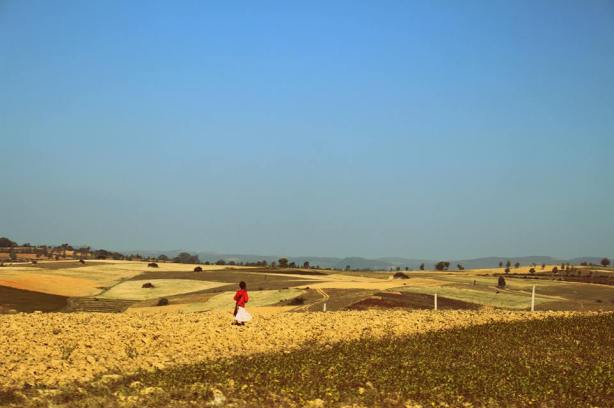It’s already March 9 in Singapore. However, it is still International Woman Day in Myanmar. I am feeling daunting a whole day for the tragedy of Malaysia Airline and still hoping to witness some miracle for all people on board so I forgot to write something for International Women Day. Long story short, let me portray how majority of women in Myanmar are self-censored.
If there was only one challenge to empower women in Myanmar, that would be their self-censorship instead of dominant men. Since we started to know how to interact with adults, we have been taught to give cream of the top to men. My mom would always keep the best part of chicken for my dad. If we were on menses, we wouldn’t be able to perform certain actions such as cleaning altar or taking Ngapi out from the pot. Another higher level of discrimination is rooted in an intangible quality called Hpon.
Also, there is the concept of hpon (ဘုန်း; from Sanskrit bhaga), which translates to “power”. It is used as an explanation for the varying degrees of ethnic, socioeconomic, and gender differences between people in a society.[6]Hpon refers to the cumulative result of past deeds, an idea that power or social position comes from merit earned in previous lives.[6] This idea is used to justify the prevalent view that women are less equal than men, who are considered to have more hpon.
– Wikipedia, Culture of Burma
Basically, men has more Hpon power than women. Thus, they can’t touch inner wears of women as well as any kind of women clothes meant for lower body including longyi (traditional sarong), skirt, trousers, lingeries and you name it. (Yes, how do they take those off when they were in bed with their ladies!?!) To make it more sensible (be ware of sarcasm from now on), men couldn’t walk through if there are those women’s clothes hanging above them because it would make their Hpon level lower.  On top of that, at many famous pagodas or Buddha stupas, women are not allowed to enter a “special area” that is closer to the Pagoda or Stupa. Only men could go and sit at such area even thought people would pray similar things and chant similar Dhamma. Upper level at Shwedagon pagoda and front areas at Mahar Myat Mu Ni Stupa and Inle Phaung Daw Oo pagoda are all meant only for men. Oh and we can’t offer gold leaf to certain pagodas in person – for e.g. Kyite Htee Yoe (Golden Rock) Pagoda. We have to pass it to someone who has men organs to offer it on behalf of us. But then, it is applicable only at certain pagodas especially at famous ones. Women can pour water above smaller Buddha statues in famous Pagoda compound. (Now, you get the point – how awesome logic of men in our country is!) Plus, polygamy is legal for Buddhist men which means it is criminal offence if a wife commits adultery while it is fine for a husband to sleep with someone else.
On top of that, at many famous pagodas or Buddha stupas, women are not allowed to enter a “special area” that is closer to the Pagoda or Stupa. Only men could go and sit at such area even thought people would pray similar things and chant similar Dhamma. Upper level at Shwedagon pagoda and front areas at Mahar Myat Mu Ni Stupa and Inle Phaung Daw Oo pagoda are all meant only for men. Oh and we can’t offer gold leaf to certain pagodas in person – for e.g. Kyite Htee Yoe (Golden Rock) Pagoda. We have to pass it to someone who has men organs to offer it on behalf of us. But then, it is applicable only at certain pagodas especially at famous ones. Women can pour water above smaller Buddha statues in famous Pagoda compound. (Now, you get the point – how awesome logic of men in our country is!) Plus, polygamy is legal for Buddhist men which means it is criminal offence if a wife commits adultery while it is fine for a husband to sleep with someone else.
When you were raped, people would spare no time blaming on you how slutty you had been instead of wondering who the horrible culprit was. During Thingyan (water festival in April), it is absolutely fine for a man to vomit on pavement during hangover while it is considered disgraceful if a girl drinks. No man would ask permission to smoke around non-smoking people and it is stupid for a woman to smoke. Guys could run half-naked in public and they would call girls who wear mini-skirts slutty.
Growing up in such society, all girls, ladies and women are so used to the rituals of the society. They are always unconsciously prioritizing men just like healthy human beings effortlessly breath in oxygen. They believe that they are meant to live so. They believe that their daughters should follow the same way since their mothers followed so. They believe that men carried better karma than women thus they are always nobler than women.
The more disheartening thing is that when a man argues groundlessly or being narrow-minded, they criticize that man for “acting like a woman” မိန်းမလိုမိန်းမရ /mein: malou mein: maja/. When a man uses dirty tricks, women denounced him for “behaving like a woman”. When a man is cowardly, they suggest him to “wear a hta mane (Myanmar traditional sarong for women)”. I think nothing is sadder than to see the women who think women are creatures who debate groundlessly, who always play dirty tricks and who are cowardly.
When you urge some normal women to do something that society does not usually allow women to do, they would response with shocking reaction. The slogan “Women can’t do that!” or “This is a woman thing” has been nailed in their brains. When their husbands betrayed, they would think of best way to attract them back. Only few of them would take legal actions or further steps towards divorce because when you are divorced, all woman and men would blame on you. Married women also assume that they are the ones who have to do all household chores despite earning income together. Sisters always accept that doing the dish for their brothers is their duties from birth.
I have no clue how we could we get rid of women refraining from obtaining what they actually want. At the very least, I could teach my future daughters how to fight for their rights and more importantly, my future sons how to deal with women fairly.
